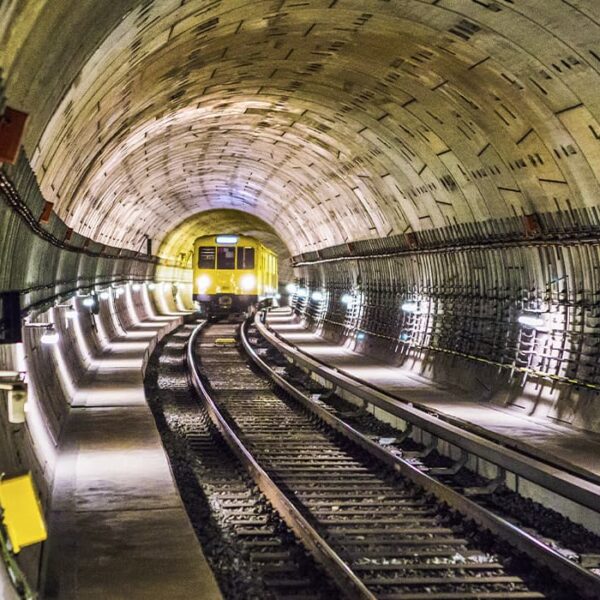The Carmelite subway in Haifa is a unique place! It is the only underground means of public transportation in all of Israel. It is also considered to be the shortest subway in the whole world. Interested? Then let’s dive into the history as usual. Then I will share my impressions of the subway. And at the end I’ll bring all the useful information for those who are going to personally take the Haifa subway.
The history of the Haifa subway is no less interesting than the history of the Israeli people. There were hard times, happy times and oblivion.
Connect the Lower City with neighborhoods located on Mount Carmel, the Haifa authorities conceived at the turn of the 20s of XX century, when the Jews did not have their own state. The plans could be implemented only after Israel’s independence. The emergence of a new mode of transport was not a whim, but an urgent need. The bus service between the districts of the city lying on the mountain and the Lower City could not cope with the influx of passengers.
After a short discussion at City Hall, they came to the conclusion that underground transportation would be the best solution. The construction of the subway was entrusted to the French firm Dunkercoise. It began in 1956. A little over three years later the subway in Haifa began its work. It consists of one line and six stations.
The subway was named “Carmelite” after the mountain in the depths of which it was dug. The opening ceremony of “Karmelit” visited the Prime Minister of Israel David Ben-Gurion.
But almost immediately after the opening of the subway, it was one after the other began to be plagued by various misfortunes. The train crashed into the walls, the cars lost their brakes, and even the deluge began. To promptly solve problems, it was decided to build an underground repair shop and an underground depot at the terminal station “Kikar Paris” (“Paris Square”).
Nearly 30 years after it opened, authorities declared that the technical condition of the Carmelite made travel in it dangerous. On December 19, 1986, the subway in Haifa was closed for a full six years. Reconstruction began in 1990 by specialists from the Swiss firm Von Roll.
A Second Chance Carmelite
The second life of the Carmelite began in 1992. The Prime Minister of Israel Yitzhak Rabin again visited the opening. With the development of technology, the number of employees of the subway was decreasing. If in the 90’s it was served by 25 people, by 2002 the staff was reduced by a third. During the brief Second Lebanon War in 2006, the Carmelite played the role of a bomb shelter for Haifa residents. At that time entrance to the station was free and around the clock.
During the first decade of the twenty-first century, the Haifa subway was patched up. Since 2012 the opening hours on weekdays were extended until midnight. Then it was decided that the line will operate on Saturdays (after sunset) and holidays. But despite all the innovations, the demand for the subway greatly decreased.
To be profitable, the Haifa subway needs to carry many more passengers, but since this is not happening, it is unprofitable. Because of this, there is periodic talk about the possibility of closing Karmelit.
Supporters of preserving the subway point out that it takes only 10 minutes to get from the Lower Town to Carmel. By bus it takes at least half an hour. And that’s if there’s no traffic jams. They are also getting environmentalists on their side, noting the greater environmental friendliness of the underground system.
In 2017, the subway in Haifa stopped working again because of a fire and subsequent reconstruction. The renovated Carmelite opened in the fall of 2018. The interior of the subway may have been revamped after the renovation. If you see different interiors than in my photos, please post in the comments.
To ride the Carmelite you need to buy a ticket, which is sold in special machines. By default, the machine is set up in Hebrew, but you can translate it into English. Then you will be offered to choose the number of rides and the category of the ticket. Now you have to pay and wait for the ticket to be printed. If you don’t understand something, ask a security guard or a man on duty to help you.
After punching the ticket in the turnstile (arrow shows how to insert a ticket into the slot) you will be on the platform. The interior of the stations is unusual, and the narrow corridors, decorated with yellow tiles, are a little intimidating.
Besides me, there was another person waiting for the train on the platform (a woman joined us later), so it looked deserted and somewhat abandoned. And only the information board, showing the time, interval to the next train and other information, told me that I had not transported in time and space. The platform at the same time (like the train) is not flat, but has different levels, which is easily explained – the train takes passengers up and down the mountain.
The interval in the movement of trains is about 10 minutes. For those who don’t want to spend them underground waiting for the train, there are information columns set up in the streets that show the location of both trains. Yes, yes, there are only two trains on the line).
